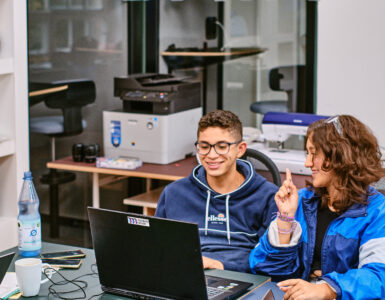by Farzam Sepanta, Carleton University, Canada.
Although extended reality (XR) technologies such as virtual and augmented reality are widely utilized in many different fields, architectural education has not witnessed a significant change over the past few years. Architects, developers, and realtors are already using XR technologies, while schools have slowly adopted XR technologies for architectural education. For instance, architects use virtual and augmented reality to collaborate with their colleagues and present their projects to clients. Developers and realtors use virtual reality to provide virtual tours of their buildings to potential buyers.
Despite the rapid growth of XR technologies in the architectural industry and design, architecture schools are falling behind in utilizing XR technologies in architectural education. Our recent paper reviewed a broad body of literature on the topic and introduced three main focus areas for using XR in architecture schools. These areas include design education, lecture courses, and all other applications that do not fall within the first two categories. In the following paragraphs, we will review the applications of XR technologies in design education and lecture courses.
XR technologies and design education
Design education is the most critical area of focus that XR technologies can significantly improve. Many first-year undergraduate students struggle with spatial visualizations during the early days of their studies. Furthermore, using 3D applications such as SketchUp or Rhino might not be as efficient as using immersive environments for the beginning of the learning process.
Meanwhile, XR technologies can allow learners to explore their concepts and ideas in an immersive environment where they can quickly reflect on their process. For instance, adding or removing blocks, surfaces, etc., in immersive environments allows students to assess the impact of their decision during the design process. But what is the difference between immersive environments and traditional tools such as SketchUp or model making? Immersive environments allow students to experience their designs on the actual scale and understand their design’s impact on users. This is an important feature that is made possible through XR technologies.
Aside from immersive environments, augmented reality (AR) allows an on-site experience of designs. In this method, students can view their designs on-site with the help of third-party tools such as their phones and tablets. As a result, they can assess the integrity of their designs with the surrounding area.
Lecture courses and gamification
Another benefit of XR technologies is their potential application in improving lecture courses, especially architecture. XR technologies can be used to present course materials; for instance, instructors can efficiently introduce different building systems, mechanical systems, and structural components with a tangible immersive experience. Another major benefit is the gamification of lecture courses. With the arrival of game engines, such as Unreal Engine, that rely on blueprints instead of coding, instructors can easily develop serious games for different lecture courses.
Blended learning and XR technologies
XR technologies improve student engagement and learning in architectural education, especially lecture courses. As part of the readings is scheduled for students in a flipped classroom, XR technologies can potentially help make readings on the students’ side more engaging and provide them with tangible examples. In addition, XR technologies can promote discussion among students as one of the techniques used in flipped classrooms.
Barriers to utilizing XR technologies in architectural education
Regarding immersive environments, headsets, such as Meta Quest 2, are required in classrooms but can be costly for architecture schools. Therefore, costs are the first barrier to wide implementation of XR technologies at schools. Secondly, some experience mild physical discomfort, such as headaches and dizziness, while using immersive environments. Thirdly, mass adoption of XR technologies in architecture schools requires human and financial resources to prepare models, code games, and deploy the final product.
XR Technologies and architectural education
Despite all barriers architecture schools face in the mass adoption of XR technologies, architectural education should not fall behind other industries in using XR technologies to improve the quality of education. Architectural education can significantly benefit from immersive visualizations, gamification, and providing students with a tangible and engaging experience of different building components.

Author
Farzam Sepanta, Carleton University, Canada














